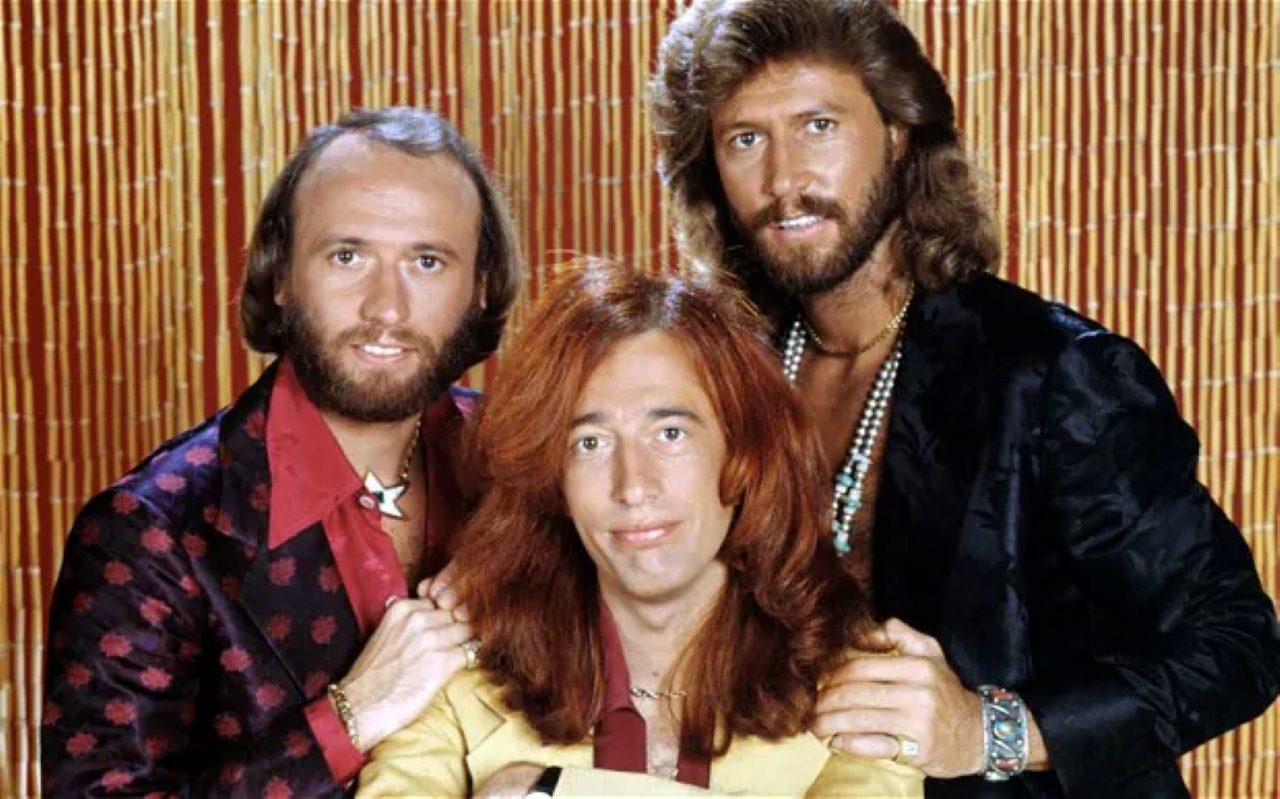The End of the First Chapter
In the late 1960s, the Bee Gees were riding high. Hits like “Massachusetts”, “I Started a Joke”, and “Words” had established Barry, Robin, and Maurice Gibb as one of the most distinctive voices in pop. But fame has a way of magnifying tensions, and by 1969, cracks began to form.
Creative disagreements — especially over who should sing lead — were brewing between Barry and Robin. Robin felt his contributions were being sidelined, while Barry, as the group’s de facto leader, often clashed with his younger twin’s vision. In mid-1969, Robin left the band, pursuing a solo career.
The split wasn’t just a personal blow — it was a commercial disaster. The Bee Gees’ popularity faltered. Without their signature harmonies intact, their chart performance dropped sharply. By 1970, the once-golden trio was reduced to uncertainty, with Barry and Maurice carrying on without Robin for a time, but without the magic spark.

The Reunion — But Not the Revival
In 1970, family and mutual respect brought Robin back into the fold. Their reunion was celebrated, and their next album, 2 Years On, included the hit “Lonely Days”. It was a welcome sign that the Bee Gees were still capable of chart success.
However, the early 1970s proved tricky. The pop landscape was shifting toward hard rock, singer-songwriters, and emerging funk influences. The Bee Gees’ soft ballads and orchestral pop no longer matched the public’s taste.
Albums like Life in a Tin Can (1973) and Mr. Natural (1974) failed to make much of an impact. Despite their creative efforts, the group found themselves increasingly seen as a band from the past. Behind the scenes, morale was low. They quietly considered whether it was time to stop.
A Chance Encounter with a New Sound
Everything changed in 1974 when the Bee Gees moved to the United States to record. Producer Arif Mardin, who had worked with Aretha Franklin and Hall & Oates, suggested they experiment with a more rhythmic, R&B-influenced approach.
One night in Miami, while rehearsing, Barry sang a phrase in a falsetto voice as a joke. But the sound caught everyone’s attention — especially Mardin’s. It was electric, playful, and surprisingly powerful.
That falsetto would become the foundation of their new style.
The Turning Point: “Jive Talkin’”
In 1975, the Bee Gees released “Jive Talkin’”. Built on a funky, syncopated guitar rhythm inspired by the sound of their car crossing a Miami bridge, the track marked a radical shift.
Gone were the melancholic ballads. In their place: danceable grooves, swaggering basslines, and Barry’s falsetto floating above it all. The song shot to No. 1 in the U.S., reintroducing the Bee Gees as a cutting-edge act rather than nostalgia.
Their album Main Course followed suit, blending R&B, funk, and pop in a way that predated disco’s peak. Songs like “Nights on Broadway” showed they could merge storytelling with rhythm-heavy arrangements.
Saturday Night Fever – The Explosion
By 1977, disco was becoming the dominant sound in clubs and on radio. The Bee Gees, now working closely with producer Albhy Galuten and arranger Karl Richardson, had perfected their groove.
When they were approached to contribute songs for the film Saturday Night Fever, they had no idea it would define an era. Over just a few weeks, they wrote and recorded “Stayin’ Alive”, “Night Fever”, and “More Than a Woman”.
The soundtrack became a cultural earthquake:
-
Over 40 million copies sold worldwide
-
24 weeks at No. 1 on the U.S. album chart
-
A defining symbol of the disco era
The Bee Gees weren’t just part of the disco wave — they were leading it. Barry’s falsetto became iconic, and their harmonies were instantly recognizable.
Why Their Comeback Worked
Many artists fade after their first success, but the Bee Gees’ reinvention was complete because they embraced change without losing their core identity.
-
Adaptability: They absorbed R&B and funk influences without sounding forced.
-
Vocal Reinvention: Barry’s falsetto gave their music a unique edge.
-
Songwriting Prowess: Even in a disco groove, their melodies and lyrical hooks remained strong.
In just a few years, they had gone from near-obscurity to the most in-demand group in the world.
Beyond Disco
Though disco’s mainstream dominance faded by the early 1980s, the Bee Gees’ second act proved their resilience. They continued writing hits for other artists — from “Islands in the Stream” (Kenny Rogers & Dolly Parton) to “Chain Reaction” (Diana Ross) — while touring and releasing new music under their own name.
The early ’70s near-breakup became just a footnote in a career defined by reinvention.
The Lesson in Their Story
The Bee Gees’ journey from internal conflict and declining popularity to cultural dominance is a masterclass in adaptation. They weren’t afraid to shed an old skin and embrace something new — even if it meant taking a risk on a sound they’d never tried before.
And perhaps that’s why their music still resonates today: beneath the styles and trends, it’s always been about the connection between three brothers, and the harmony they could only create together.